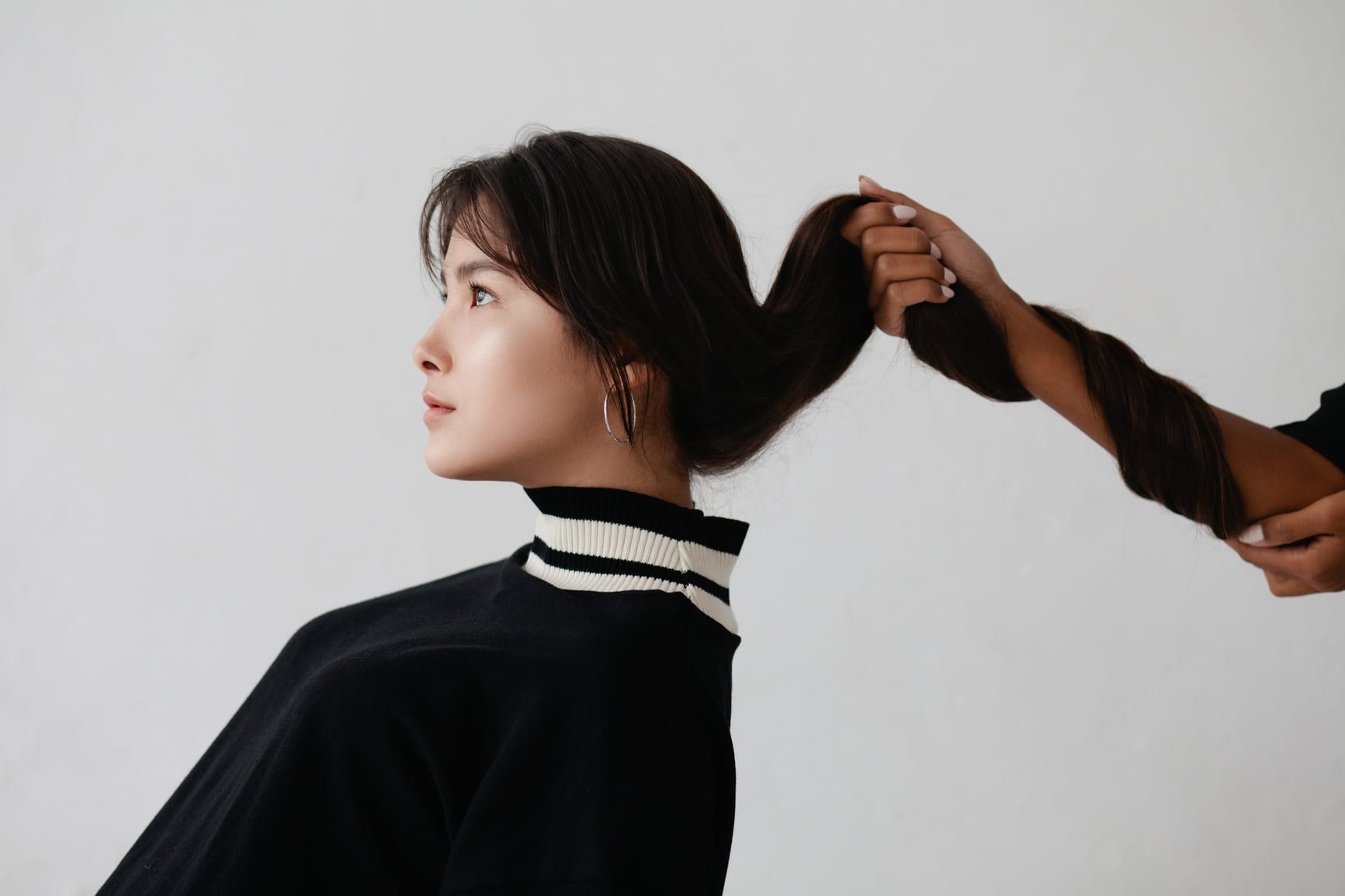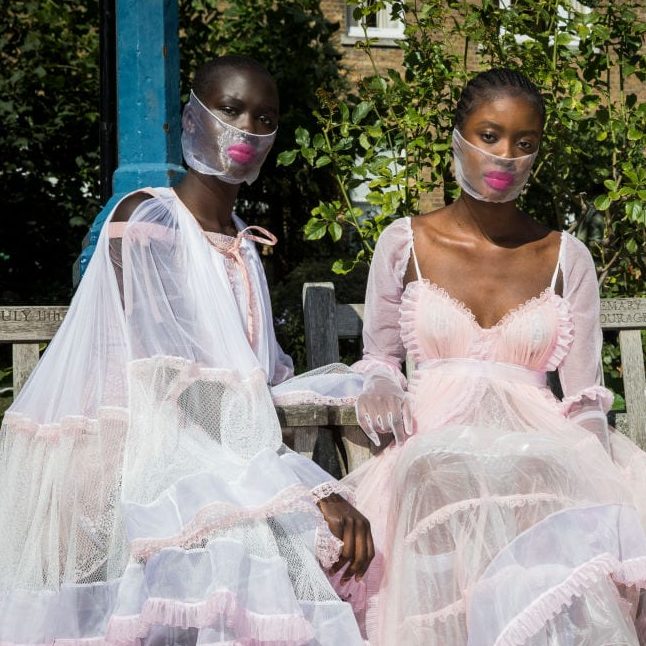Okay, so you cracked. After months in quarantine, you couldn’t take the roots, the grays, or the brassiness and you reached for a box of at-home dye to disastrous results. “How to color your hair at home” was listed among the top Google search trends of 2020. According to a report by Mintel, the home hair color market surpassed $2.4 billion in 2020 retail sales for a year-over-year growth rate of nearly 16%. When the pandemic hit, it experienced a 218% month-on-month growth in hair-dye sales for April 2020. In 2021, its hair-dye sales are up over 60% year-over-year.
So you’re not alone — and more importantly, this can be fixed.
There are reasons haircare professionals warn against trying to dye your hair at home. Namely, boxed dyes and salon color are formulated differently, so even if you were a professional, you’d never be able to get the same results as you might in the salon. “Box dye is usually a more concentrated formula because it has to work on everyone’s hair,” says Sabit Hantal, hairstylist and founder of SH Fifth Avenue Salon. “Because it is formulated so strongly, that’s where the risks are.”
The one-size-fits-all approach doesn’t mean your hair will look like the picture on the box — it actually means there’s more room for variation in the results. “Two clients can have the exact same color hair, but get different results with same box color because there are other factors involved, like the amount of grey and your personal hair history (like if you have the previous color in your hair, or have had other chemical processes),” says Hantal. “A professional would be able to decipher that and create a custom formula for each client.”
What can go wrong
When you DIY your hair dye, you’re likely to run into at least one of three issues: the color is all wrong, it winds up looking dull and flat, or your hair feels brittle and damaged.
If you tried at-home dye during the pandemic, your hair may have come out looking orange — especially if you have naturally dark hair and tried to go lighter. “A lot of people don’t understand that your hair has to go through levels of lightening,” says Christin Brown, a celebrity hairstylist specializing in naturally textured and curly hair. So if you have dark roots, “you’re going to have that orange brassiness” instead of the honey blonde you typically get from the salon, Brown says. “There’s a lot of room for error, unfortunately. So unless your hair is medium brown and you’re doing a medium brown root touch up, there’s a lot of room for misinterpretation”.
You can also wind up with a spotty or patchy effect if you don’t distribute the dye evenly, working in sections. “At-home dyes do not have a lot of the same complexes that you’ll see in professional color lines so you will almost always get a very flat look to the hair,” says Brown. “It almost looks as if somebody has dipped your head in a bucket of paint.”
Finally, damaging the actual integrity of your hair is also a big risk. “We have this mindset that if we leave it on the hair longer, we’ll get a better result. But what happens is people will typically over process their hair,” she explains. This can happen with any shade but is especially common when you’re trying to go lighter than your current shade. “When trying to bleach your own hair — and please don’t do this — you can end up with splotchy hair or orange hair,” says Hantal. “Sometimes people will keep bleaching to try and fix it but you can destroy your hair’s integrity and have issues of damaged, brittle, dull hair. If you don’t know what you’re doing, you can burn off your hair.”
This is more of a risk if you have curly or textured hair and especially with textures you see on Black women and Latinx women, explains Brown. “Chemical processes can actually change your hair’s texture a bit,” adds Hantal. “Coarse hair, for example, already doesn’t have a smooth cuticle so when you add chemicals to it, you can make it worse and roughen it up even more. If you’re not careful you can do permanent damage to your hair.”
How to fix it
If your hair is the wrong color…
Your best option is to head to a professional to fix the dye job. “If it’s a bad color job, sometimes a professional can fix the color by putting another color in to neutralize whatever the issue is or attempt to remove the box dye. If it’s a bleaching issue, hopefully, they can do a color correction or try to fix it while maintaining the health of the hair,” Hantal says.
Whatever you do, don’t try to dye it again yourself, says Brown. “It’s such a slippery slope because you see that first result and you freak out. My best advice for anyone, whether you feel comfortable going into a salon or not at the time, is to just stop,” she says. Most of the time, people end up digging themselves into an even bigger ditch, further damaging the hair, and needing an even bigger color correction when they do ultimately get to a salon. (And if your hair was damaged at the salon, look for a new colorist who specializes in color corrections.)
If your strands look dull…
If you’re not comfortable going to the salon yet, “reach out to your stylist for advice,” says Hantal. Many salons (including SH Fifth Avenue) have started offering virtual consultations, so a pro can assess your hair and give you a treatment plan.
“Your hair could just need a hydrating mask because you dried it out, but because it feels brittle or dull you may assume it more serious damage from lightening,” Hantal says. He recommends starting with a hydrating hair mask that has ingredients like hyaluronic acid, which stimulates hair growth; gluco peptides, which penetrate deep into the hair cuticle to strengthen; wheat protein, which helps to repair the elasticity of damaged hair; and native plant cells, which help promote deep hydration and leaving your hair soft and silky.
If your hair is damaged and breaking…
Dry hair and damaged hair are not the same — if your hair is damaged to the point where it’s brittle and breaking off (those telltale baby hairs popping up around your part will give it away), you’ll need professional help. Brown prescribes an in-salon OLAPLEX treatment to repair the broken bonds that occur with this type of chemical damage.
But there is also some at-home repairing you can do to put your hair in a better place. “I would suggest using OLAPLEX No. 0 and OLAPLEX No. 3. as prep,” says Brown, which will help repair the broken bonds of your hair at the cellular level. “That’s what I have a lot of my clients do right now before any color session,” Brown says. “That way they’re already doing their homework to see how we can get the hair in optimal condition before we even start the coloring process in salon”.
We only recommend products we have independently researched, tested, and loved. If you purchase a product found through our links, Sunday Edit may earn an affiliate commission.







